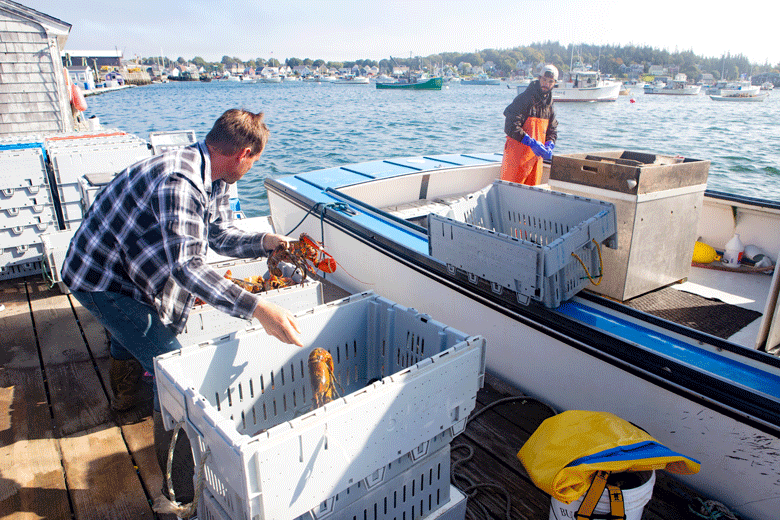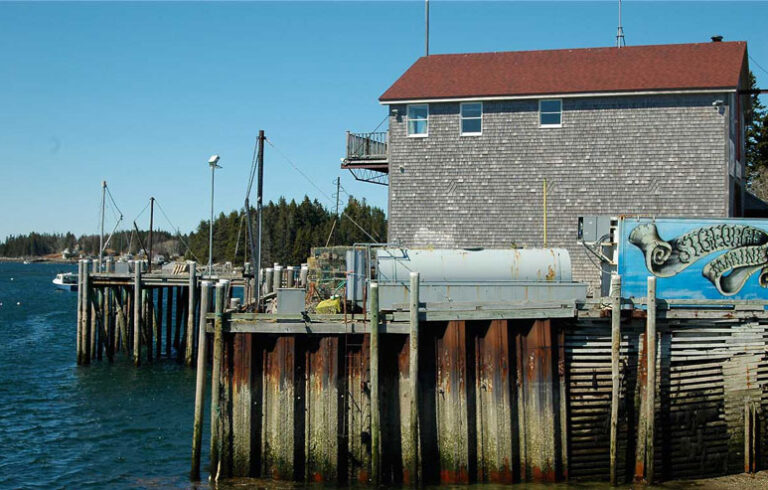The state Department of Marine Resources announced on March 1 that 2023 was another strong year for Maine commercial fishermen who earned $611 million at the dock point of sales, an increase of more than $25 million over 2022.
“The Maine seafood industry continues to be a powerful economic engine for our state,” said Gov. Janet Mills in a press release. “The dedication to sustainability and premium quality by our fishermen, aquaculturists, and dealers is a source of tremendous pride for everyone who calls Maine home.”
The jump in overall value is largely attributed to a strong boat price for lobster, Maine’s most valuable species in 2023. The price paid to fishermen increased from $3.97 per pound in 2022 to $4.95 per pound in 2023, netting harvesters an additional $72 million compared to the previous year, for a total value in 2023 of $464 million.
Almost 94 million pounds of lobster was landed in 2023, the lowest in 15 years. Industry advocates have suggested that the catch is a return to average after several years that saw landings of over 100 million pounds.
Still, a three-year sampling of juvenile lobster showed an average 40% drop in that population which has triggered a change in the legal minimum and maximum sizes, which goes into effect in January 2025.
“The price Maine lobstermen received last year is a reflection of the continued strong demand for this iconic seafood,” said DMR Commissioner Patrick Keliher. “Consumers and buyers recognize the Maine lobster industry’s longstanding commitment to sustainable, responsible harvesting practices and how it provides a unique, premium culinary experience.”
Maine’s elver fishery once again was the second most valuable in 2023, earning fishermen $19.5 million on the strength of a $2,009 per pound price.
Maine oysters were the fourth most valuable harvested product at over $11 million on the strength of a 20-cent per pound increase in value.
“Maine’s elver quota of 9,688 pounds expires after this year,” Keliher said. “Fortunately, because of the strong management measures we’ve instituted here in Maine, the Atlantic States Marine Fisheries Commission American Eel Board has decided that the existing quota will remain in place, preventing what could have been a loss of millions of dollars in income for Maine’s elver industry.”
Through an addendum to the fishery management plan for elvers, ASMFC will establish the number of years the current quota will remain in effect.
Softshell clam diggers earned $13.8 million in 2023, which made the fishery the state’s third most valuable.
“DMR’s Nearshore Marine Resources Program, launched in 2022, has been working hard to support this vital fishery through outreach, funding, and collaboration with towns to develop effective shellfish management strategies,” said Keliher.
More information about the program and funding opportunities can be found on DMR’s website.
Maine oysters were the fourth most valuable harvested product at over $11 million on the strength of a 20-cent per pound increase in value.
Menhaden, used as bait for the lobster fishery, was the state’s fifth most lucrative fishery in 2023, with a landed value of more than $10 million.
Maine’s groundfish industry also saw an increase in landings and a more stable price due in part to investments DMR made in the Portland Fish Exchange, Vessel Services, and the Maine Coast Fishermen’s Association with COVID relief funds from NOAA.
“DMR is proud to have supported fuel, ice and landing fee rebate programs at the Portland Fish Exchange and Vessel Services,” said Keliher. “These programs, which helped to reduce costs, along with market stability enabled by MCFA’s Fishermen Feeding Mainers program, were critical to maintaining and increasing landings of groundfish in Maine. It’s important work and a positive story; fishermen were able to keep working, critical infrastructure has been maintained, and fresh, healthy Maine seafood went to schools and families in need.”





